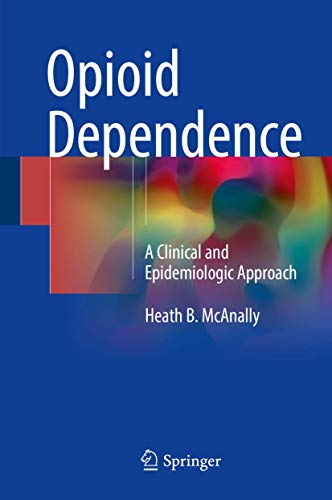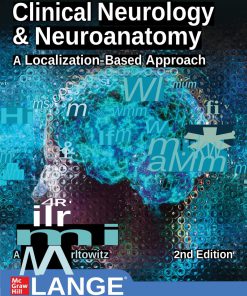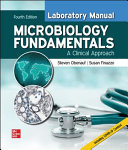Opioid Dependence A Clinical and Epidemiologic Approach 1st edition by Heath Mcanally ISBN 3319474960 978-3319474960
$50.00 Original price was: $50.00.$25.00Current price is: $25.00.
Opioid Dependence A Clinical and Epidemiologic Approach 1st edition by Heath Mcanally – Ebook PDF Instant Download/Delivery: 3319474960 978-3319474960
Full download Opioid Dependence A Clinical and Epidemiologic Approach 1st editon after payment

Product details:
ISBN 10: 3319474960
ISBN 13: 978-3319474960
Author: Heath Mcanally
The book begins with a public health/epidemiologic examination of the situation, with a systematic view of the problem based on classic (infectious disease) epidemiologic principles applied to this behavioral health issue. This application is expanded to take into account the fact that unlike most epidemics in our species’ history, a unique factor that must be accounted for in any public health analysis is that the host (opioid-dependent/misusing patient) is generally not under sufficiently strong motivation to avoid the disease. The introduction concludes with a survey of recent containment approaches, categorized epidemiologically by target (agent, vector, host.)
The remainder of the book is organized according to this framework, addressing agent, vector/transmission and host, respectively. Sections Three and Four comprise the major focus of the book, and are dedicated primarily to practical education for primary care providers in preventing opioid use disorder, and overcoming it after the fact.
Opioid Dependence A Clinical and Epidemiologic Approach 1st Table of contents:
-
Preface
- Introduction to the Complexity of Opioid Dependence
- The Clinical and Epidemiologic Approach to Understanding Opioid Use Disorder
- Acknowledgements
-
Chapter 1: Introduction to Opioid Dependence
- The History of Opioid Use and Dependence
- Defining Opioid Dependence and Opioid Use Disorder (OUD)
- The Scope of the Opioid Crisis: Global and Local Perspectives
- Epidemiology of Opioid Use and Misuse
-
Chapter 2: Neurobiology of Opioid Dependence
- The Brain’s Reward System and Opioid Receptors
- Neuroplasticity and Addiction
- Tolerance, Withdrawal, and Dependence Mechanisms
- Genetic and Environmental Factors in Opioid Dependence
-
Chapter 3: Clinical Presentation and Diagnosis of Opioid Use Disorder
- Recognizing Opioid Use Disorder in Patients
- Diagnostic Criteria: DSM-5 and ICD-10
- Co-occurring Mental Health Disorders and Comorbidities
- Screening Tools and Assessment of Severity
-
Chapter 4: Epidemiology of Opioid Use and Dependence
- Global Trends in Opioid Consumption and Misuse
- Patterns of Opioid Use and Demographics
- Social and Environmental Determinants of Opioid Dependence
- The Impact of Prescription Opioids and Heroin Use
- The Rise of Fentanyl and Synthetic Opioids
-
Chapter 5: The Medical Consequences of Opioid Dependence
- Health Risks Associated with Opioid Misuse
- Acute and Chronic Health Conditions: Overdose, Infection, and Organ Damage
- The Role of Opioids in the Development of Infectious Diseases (HIV, Hepatitis C)
- Long-Term Effects on Mental and Physical Health
-
Chapter 6: Treatment Approaches to Opioid Use Disorder
- Pharmacological Treatments: Methadone, Buprenorphine, and Naltrexone
- Behavioral Therapies and Counseling
- Detoxification vs. Maintenance Therapy
- Personalized Approaches to Treatment
- The Role of Harm Reduction Strategies
-
Chapter 7: Pain Management and Opioid Prescribing
- The Balance Between Pain Relief and Risk of Dependence
- Guidelines for Safe Opioid Prescribing in Chronic Pain Management
- Non-Opioid Alternatives and Complementary Therapies
- Addressing the Role of Healthcare Providers in Prevention and Education
-
Chapter 8: Prevention of Opioid Use Disorder
- Early Identification and Screening of At-Risk Populations
- Education and Public Health Campaigns
- Prescription Monitoring Programs and Regulatory Measures
- Preventing Opioid Misuse in Adolescents and Young Adults
-
Chapter 9: The Role of Public Health and Policy in Addressing Opioid Dependence
- Public Health Responses to the Opioid Epidemic
- National and Global Strategies for Reducing Opioid Misuse
- The Importance of Coordinating Healthcare, Social Services, and Law Enforcement
- Policy Approaches: Harm Reduction vs. Criminalization
- The Impact of Medically Assisted Treatment (MAT) on Opioid Dependence
-
Chapter 10: Overdose Prevention and Reversal Strategies
- Understanding the Opioid Overdose Crisis
- The Role of Naloxone in Overdose Reversal
- Community-Based Overdose Prevention Programs
- Educating First Responders, Healthcare Providers, and the Public
-
Chapter 11: The Future of Opioid Use Disorder Treatment and Research
- Emerging Therapies and Innovative Treatments
- The Role of Precision Medicine and Genetic Testing in Treatment
- Ongoing Research into Opioid Dependence and Addiction Mechanisms
- The Promise of Integrating Digital Health and Technology in Treatment
-
Chapter 12: Special Populations and Opioid Use Disorder
- Opioid Use in Pregnant Women and Neonatal Abstinence Syndrome
- Opioid Dependence in Older Adults and Vulnerable Populations
- Gender Differences in the Treatment of Opioid Use Disorder
- Addressing the Needs of Homeless and Marginalized Communities
-
Conclusion: A Multidimensional Approach to Addressing Opioid Dependence
- Integrating Clinical, Epidemiological, and Societal Efforts
- The Need for Continued Collaboration Among Stakeholders
- Toward a Comprehensive and Compassionate Solution to the Opioid Crisis
-
Appendices
- Glossary of Key Terms
- Useful Resources for Healthcare Providers and Patients
- Key Organizations Involved in Opioid Use Disorder Treatment and Advocacy
-
References
-
Index
People also search for Opioid Dependence A Clinical and Epidemiologic Approach 1st :
opioid dependence dsm 5
opioid dependence criteria
opioid dependence diagnostic criteria
opioid dependence cdc
opioid dependence in controlled environment
Tags:
Heath Mcanally,Opioid Dependence,Epidemiologic Approach
You may also like…
Medicine - Clinical Medicine
Tobacco Dependence A Comprehensive Guide to Prevention and Treatment Michelle N. Eakin (Editor)
Medicine - Clinical Medicine
Medicine - Dermatology
Clinical Contact Dermatitis A Practical Approach Gianni Angelini
Linguistics - Sociolinguistics
Introducing Pragmatics A Clinical Approach 1st Edition Louise. Cummings
Medicine - Others
Chemistry - Biochemistry
Medicine - Neurology
Biology and other natural sciences - Microbiology
Laboratory Manual for Microbiology Fundamentals: A Clinical Approach Susan Finazzo










